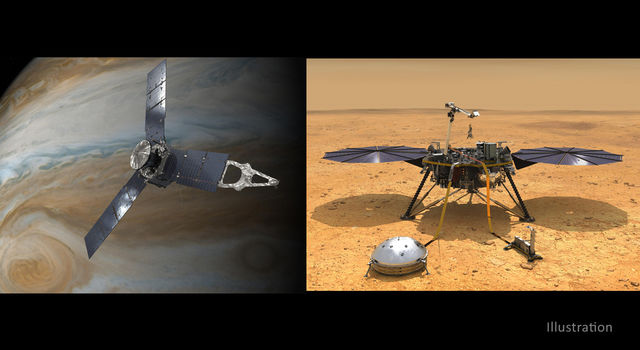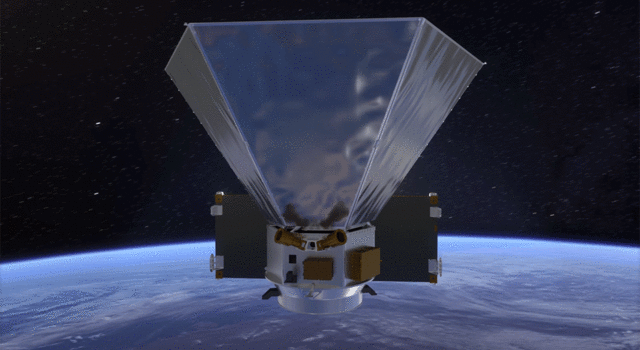Blogs | Slice of History | July 1, 2014
Temperature Structure Radiometer
In 1979 there was a Clear Air Turbulence (CAT) Flight Test Program at the NASA Jet Propulsion Laboratory that used a microwave radiometer to measure the temperature at various altitudes in order to map the inversion layers that can cause turbulence for aircraft.
In 1980 a new 55 GHz radiometer was developed by the Microwave Observational Systems Section (383) to passively measure the temperature of oxygen molecules in the air. The Temperature Structure Radiometer (TSR) was flown over the western United States on a NASA CV-990 aircraft based at Ames Research Center. It was mounted inside the cabin, with a view through a special microwave-transparent window. An HP 9825 desktop computer controlled the scan sequence, recorded raw data and converted the readings to an “altitude temperature profile” display. With the information provided by a CAT avoidance sensor, pilots would be able to navigate to a smoother altitude for greater safety and comfort. In this 1981 photo, Bruce Gary (senior scientist, Observational Systems Division, at right) and Jim Johnston (383 section manager) look at the new TSR.
This post was written for “Historical Photo of the Month,” a blog by Julie Cooper of JPL's Library and Archives Group.
TAGS:HISTORY, MISSIONS, SPACECRAFT, INSTRUMENTS







